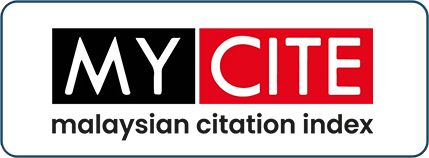Reviewing The Literature on Multiple Themes of Islamic Attire Practice Among Muslim Women
DOI:
https://doi.org/10.33102/jfatwa.vol24no1.314Keywords:
chastity, aurah, Islamic attire, religion, hijab.Abstract
Islam calls upon its men and women believer to preserve their chastity, in which one of the ways to achieve it is through proper clothing that covers their aurah. Various Quranic verses and prophetic traditions provide guidelines about how one should cover their aurah. Nevertheless, Islam does not specify the type of clothing to be worn, affirming that that any clothes are permissible, as long as it follows the guidelines of aurah covering. Even though it is undisputable that it is a religious commandment in Islam for its believer to dress in a manner that their aurah is not revealed, the fact is that nowadays, many other themes other than religion are layering Islamic attire practice among Muslim women whether it is hijab, jibab, abaya, or any other Islamic apparel. This article aims to review literatures related to the practice of Islamic attire among Muslim women within the last 10 years, focusing on the themes accompanying it among Muslim women around the world. Official-based and academic-content literatures related to Muslim women attire from 2010 until 2020 are selected and analysed to discover the themes involved in the practice of Islamic attire among Muslim women. This article found several important themes behind the practice of Islamic attire among Muslim women, namely religion, culture, society, family, fashion and media. The finding in this article may be useful for academics and researchers to further undertake the topic of Muslim women attire, as well as to fill the gaps on aspects yet to be studied on the topic of Muslim women attire.
Downloads
References
Abd. Hamid, A. (2008). Mu’jam Al-Lughah Al-‘Arabiyah Al-Mu’asirah. Cairo: ‘Alam Al-
Kutub.
Abd. Manaf, Aini Maznina; Wok, Saodah; Ismail, Rizalawai (2014). Attitude and Impact
Changes of Hijab Wearing Among Muslim Malay Women in Malaysia. an Article submitted to 10th Biennial Convention of the Pacific and Asian Communication Association (PACA). Proceedings, Pp. 1455-1469.
Abu Daud, S. (w.d). Sunan Abi Daud. Beirut: Al-Maktabah Al-‘Asriyyah.
Afroza, Akter Rita (2017, July). Assertion of Wearing Hijab in the Community: An
Analysis. American Scientific Research Journal for Engineering, Technology and Sciences. Vol. 29, Pp. 18 - 31.
Al-Albani, M. (2002). Jilbab Al-Mar’ah Al-Muslimah. Ar-Riyadh: Dar As-Salam.
Al-Baihaqi, A. Al-Adab lil Baihaqi. Beirut: Muassasah Al-Kutub Ath-Thaqafiyyah.
Al-Balkhi, M. (2002). Tafsir Maqatil bin Sulaiman. Beirut: Darul Ihya’ At-Turath.
Al-Jassas, A. (2010). Syarh Mukhtasar At-Tahawi. Beirut: Darul Basha’ir Al-Islamiah.
Al-Qardhawi, Y. (1998). An-Niqob Lilmar’ah: Baina Al-Qawl Bibid’iyyatihi wal Qawl
Biwujubihi. Beirut: Al-Maktab Al-Islami.
Al-Qurtubi, A. (1963). Al-Jami’ li Ahkam Al-Qur’an. Al-Qahirah: Dar Al-Kutub Al-
Misriyyah.
Anila, Kamal & Waseem, Fayyaz (2016, June). Conditions of Wearing Hijab and Other
Forms of Dress: A Comparative Study, Pakistan Journal of Women’s Studies Vol. 23, No. 2, Pp. 122 – 134.
At-Tabari, M. (2000). Jami’ul Bayaan fi Takwilil Qur’an. Beirut: Muassasah Ar-Risalah.
Ath-Tha’labi, A. (2002). Al-Kasyfu Wal Bayan ‘A Tafsir Al-Qur’an. Beirut: Dar Ihya’
At-Turath Al-‘Arabi.
At-Tuweijri, H. (1980). As-Sorim Al-Masyhur ‘Ala Ahli Tabarruji Wassufur. Halab: Dar
As-Salam.
C.A. DeCourse (2017, March). Attitudes of Professional Muslim Women in Saudi
Arabia Regarding Wearing the Abaya. Journal of Asian Culture and History 9, No.2, Pp. 16 – 28.
Citra, Puspitasari & Jasni, Dolah (2018, November). The Analysis of Integration
between Hijab Concept and Fashion in Indonesia. Advances in Social Science, Education and Humanities Research vol. 207, Pp. 204 – 245.
Elham, Nour Ahmad Maqsood (2013). The Hijab and Muslim Women in a Western
Society: Motivation, Modifications, and Well-being. PhD dissertation, University of Oregano, Corvallis.
Erum, Tariq-Munir (2012). The Dynamics of Wearing Hijab for Muslim American
Women in the United States. Master dissertation, Iowa State University, Ames.
Fadila, Grine & Munazza, Saeed (2017, January). Is Hijab a fashion statement? A study
Of Malaysian Muslim women. Journal of Islamic Marketing, Vol. 8 Issue: 3, Pp. 430 - 443. Doi: https://10.1108/ JIMA-04-2015-0029.
Farid, Pazhoohi & Robert, P. Burriss (2016). Hijab and Hitchhiking: A Field Study.
Journal of Evolutionary Psychological Science. No. 2, Pp. 32–37.
Fatimah, Koura (2018). Navigating Islam: The Hijab and the American Workplace.
Societies. Vol.8, No. 125, Pp. 1-9. doi: 10.3390/soc8040125.
Hanisa, Hassan; Biranul, Anas Zaman & Imam Santosa (2015). Tolerance of
Islam: A Study on Fashion among Modern and Professional Malay Women in Malaysia. International Journal of Social Science and Humanity. Vol. 5, No. 5, pp. 454-460.
Hyun-Joo, Kim, Hye-Yeon, Kim, Sul-A, Han, Jin Soo, Jeon & Hae-Seung, Kang (2012). High-Valued Abaya Designs for the Middle Eastern Market: Focus on the UAE’s Dubai Market. Journal of Korean Society of Design Sciences. Vol 25, No. 5, pp. 101-111.
Ibn Taimiyyah, A. (1985). Hijab Al-Mar’ah wa Libasuha Fi Assolah. Beirut: Al-Maktab
Al-Islami.
Ibn Uthaimin, M. (2008). Risalah Al-Hijab. Al-Qasim: Muassasah Asy-Sheikh
Muhammad bin Salih Al-Uthaimin Al-Khairiyyah.
Jackson, Kenneth E. & Monk-Turner, Elizabeth (2015). The Meaning of Hijab:
Voices of Muslim Women in Egypt and Yemen. Journal of International Women's Studies. Vol. 16, No. 2, pp. 30 – 48.
Kathryn, Mackay (2013). Muslim Women and the Hijab in Britain: Context and
Choices. PhD dissertation, University of Derby, England.
Laura, Nistor (2017). Hijabistas as a Fashion Phenomenon: A Review.
Social Analysis Vol. 7, No. 59, doi: 10.1515/aussoc-2017-0004.
Li Chen, et al. (2014). Rethinking Hijab: Multiple Themes in Women’s
Perception of the Hijab Fashion. International Journal on Communication, Media, Technology and Design. Vol. 2, No. 24. Pp. 310 – 324.
Mihret, Woldesemait (2012). The Rhetoric of the Modern Hijab. Independent Study
Project (ISP) Collection. pp. 3 - 17.
Mohamad, Siti Mazidah (2018). Hijab di Brunei Darussalam: Satu Kajian Konteks
dan Amalan. Rampak Serantau. Dewan Bahasa dan Pustaka, Negara Brunei Darussalam. Bil. 25. Halaman 108-124.
Muhammad, Husnain Sethi (2019). Perception of Hijab Wearing Women Towards the
Fashion Industry in Pakistan. Trends in Textile Engineering and Fashion Technology vol. 5, No. 5, pp 210 – 232.
Nurzihan, Hassim (2014). A Comparative Analysis on Hijab Wearing in Malaysian
Muslimah Magazines. The Journal of the South East Asia Research Centre for Communications and Humanities. Vol. 16, No. 1. pp. 79 - 96.
Pasha-Zaidi, Nausheen (2014). The Hijab Effect: An exploratory study of the influence
Of hijab and religiosity on perceived attractiveness of Muslim women in the US and the UAE. Ethnicities. Doi: 15. 10.1177/1468796814546914.
Perumal, Prasath & Archchana, Yoganathen (2018). Influence of Social Media
Marketing on Consumer Buying Decision Making Process. SLIS Student Research Journal. Vol. 1. No. 1.
Qal’aji, M. (1988). Mu’jam Lughatul Fuqaha’. Beirut: Dar An-Nafa’is.
Rafidah, Abdul Razak; Rohaiza, Rokis; Bazlin, Darina & Ahmad, Tajudin (2017).
Interpretations of Hijab in the Middle East: Policy Discussion and Social Implications Towards Women. Journal Al-Burhan. Vol. 1, No. 1, Pp. 38-51.
Rashelle V. H. & Litchmore, Saba Safdar (2019). Meanings of the Hijab: Views of
Canadian Muslim Women. Asian Journal of Social Psychology. Vol. 19.
Siti Hasnah, Hassan & Harmimi, Harun (2016). Factors influencing fashion
Consciousness in hijab fashion consumption among hijabistas. Journal of
Islamic Marketing. Vol. 7, Issue: 4, pp. 476 - 494. doi: 10.1108/JIMA-10-2014-0064.
Sk., Mahrufur Rahman; Md., Nazmul Islam & Atia, Ferdousi (2018, July). Is Hijab a
Fashion Statement? A Study on Bangladeshi Muslim Women. IOSR Journal of Bussiness and Management Vol. 20, No. 12, Pp. 21-27. doi: 10.9790/487X-2012042127.
Tengku Mohd Azzman Shariffadeen, Tengku Siti Aisha & A.Manaf, Aini Maznina
(2019). Celebrity-Fan Engagement on Instagram and Its Influence on the Perception of Hijab Culture among Muslim Women in Malaysia. Malaysian Journal of Communication. Vol. 35, No. 1, Pp. 286-302.
Uma, Bhowon; Harshalini, Bundhoo (2016). Perceptions and Reasons for Veiling: A
Qualitive Study. Psychology and Development Societies vol. 28, no. 1. pp. 1-21. Doi: 10.1177/0971333615622894.
Yildiz, Atasoy (2006). Governing Women’s Morality: A study of Islamic Veiling in
Canada. European Journal of Cultural Studies, Vol. 9. Pp. 203–221. Doi: 10.1177/1367549406063164.
Yasinta, Fauziah Novitasari (2014). Jilbab Sebagai Gaya Hidup: Studi Fenomenologi
Tentang Alasan Perempuan Memakai Jilbab dan Aktivitas Solo Hijabers Community. Jurnal Sosialitas. Vol. 4, No. 1.
Zulkifli, Abdul Latiff & Zainol Alam, Fatin Nur Sofia (2013). The Roles of Media in Influencing Women Wearing Hijab: An Analysis. Journal of Image and Graphics. Vol. 1, No. 1, Pp. 50-55. Doi: 10.12720/joig.1.1.50-54.
Downloads
Published
Issue
Section
License
Copyright (c) 2021 Nurjannah Hasmad

This work is licensed under a Creative Commons Attribution 4.0 International License.
The copyright of this article will be vested to author(s) and granted the journal right of first publication with the work simultaneously licensed under the Creative Commons Attribution 4.0 International (CC BY 4.0) license, unless otherwise stated.















